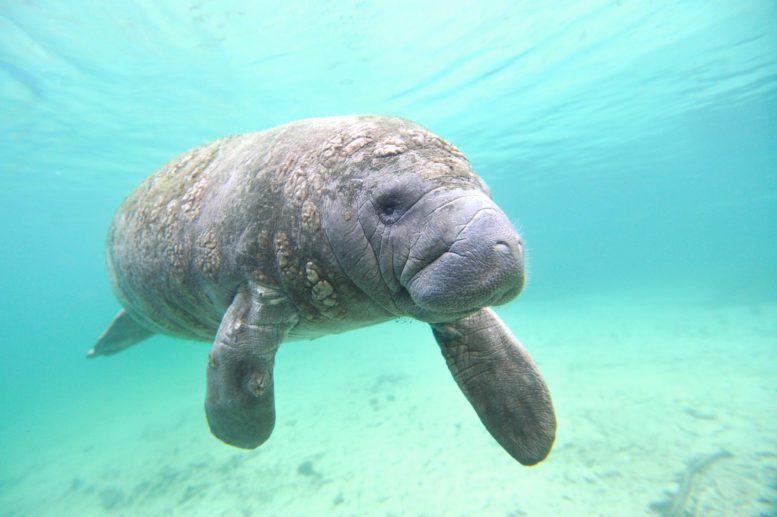NOAA funds veterinary care research in response to toxic algae
Florida International University and Mote Marine Laboratory are developing new and more efficient ways to treat manatees exposed to toxic red tide.
Through a $428,000 grant from the National Oceanic and Atmospheric Administration’s ECOHAB program, FIU and Mote are launching a three-year project to improve veterinary care for rescued manatees by studying how the cells in their immune system respond to certain antioxidants. The goal is to identify those antioxidants that may work better than the current treatment, which uses anti-inflammatory substances.
FIU chemist Kathleen Rein and Mote marine immunology expert Cathy Walsh are leading the research team.
“The current approach is simply to give palliative care and wait for them to clear the toxin and get better,” Rein said. “This new treatment could accelerate the healing process. If this treatment is successful, it could be used with many other animals including dolphins, turtles and birds.”
Red tide toxins can compromise a manatee’s immune system, causing a harmful phenomenon known as oxidative stress and leaving the animal vulnerable to illness. Manatees can become sick or even die from eating tainted vegetation or inhaling contaminated air.
“We’re identifying what compounds are the most promising in minimizing oxidative stress levels so they can be tested in a veterinary setting with these animals in the future,” Walsh said. “The need for better treatment is underscored by the current, long-lasting bloom of Florida red tide and its intense impacts on Florida manatees.”
The current bloom of Karenia brevis — the microscopic algae causing the Florida red tide — is the worst the state has seen since 2005. Seven counties are currently in a state of emergency with no predictions on how long the current red tide bloom will last.
Red tide is to blame for 10 percent of manatee deaths over the last 10 years. During bloom years, that number jumps to 30 percent. More than 575 manatees have already died this year including 103 suspected or confirmed red tide cases, according to the Florida Fish and Wildlife Conservation Commission. This surpasses the year-long total of 538 from 2017.
“Harmful algal blooms are global threats to ecosystems and people,” said Mike Heithaus dean of FIU’s College of Arts, Sciences & Education. “This collaboration between our researchers and Mote is exactly the type of collaboration we need to help the state of Florida.”
Just two years ago, the U.S. Fish and Wildlife Service changed the manatee’s status from endangered to threatened. Rein and Walsh’s research, if ultimately applied successfully to veterinary care, may help keep manatees from plummeting back to endangered status.






